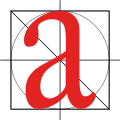Talk:Quotation mark
| This is the talk page for discussing improvements to the Quotation mark article. This is not a forum for general discussion of the subject of the article. |
Article policies
|
| Find sources: Google (books · news · scholar · free images · WP refs) · FENS · JSTOR · TWL |
| Archives: 1, 2, 3, 4, 5, 6, 7, 8, 9Auto-archiving period: 6 months |
| This It is of interest to the following WikiProjects: | |||||||||||
| |||||||||||
| This article is based on material taken from the Free On-line Dictionary of Computing prior to 1 November 2008 and incorporated under the "relicensing" terms of the GFDL, version 1.3 or later. |
Table links make no sense
[edit]The Summary table of this article contains links to wiktionary. As far as I have searched, none of those wiktionary pages exist. It makes no sense to have those links instead of links to different language wikipedias. — Snoteleks (talk) 15:59, 22 March 2025 (UTC)
- Agree, I suggest to remove those links or have the pages created...
- Theking2 (talk) 08:31, 23 August 2025 (UTC)
Esthetic problem: ." as a future aligned single character
[edit]We should create a unique closing quotation mark at the end of phrases. An aligned ." as a single character when used at the end of the phrase[s].
This is a glyph/font esthetic problem according to many graphic artists, font creators and others who noticed this problem. 2A02:587:4F0C:9300:ADDF:7B50:FFD5:C561 (talk) 09:32, 18 April 2025 (UTC)
- No, it is not a font or glyph problem. It is no different in concept to the ⟨fi⟩ ligature: see Ligature (writing)#Stylistic ligatures and OpenType#Description. You just need to persuade the vendors of computer fonts to provide it but you may not use Wikipedia to do so. 𝕁𝕄𝔽 (talk) 18:38, 19 May 2025 (UTC)
- Putting the dot/full-stop/period under the quote mark is not universally preferred, though it's arguably better than putting them in the reverse of their logical order.
- We don't put sentence punctuation inside noun phrases, so why do we tolerate or even require inserting punctuation inside a quote when the quoted text as a unit functions as a noun in the containing sentence? Give me precision and unambiguity over subjective “beauty”; your “ugly” is my “sane, logical, and therefore easier to read”.
- What really gets me is that people justify weird conjunctions of quotes and other punctuation on the grounds that the inter-word spacing looks better, and yet those same people typically eschew ragged right margins, insisting that the spacing between words should change randomly from line to line. Pick a side and stick to it.
- Anyway, Wikipedia isn't the place to campaign for either position.
- Sorry, rant over. Martin Kealey (talk) 04:30, 4 October 2025 (UTC)
Quotation mark and the Apostrophe
[edit]It appears to me that the "Quotation mark" page and the "Apostrophe" page are inconsistent and disagree. Qzvoswx (talk) 18:35, 18 May 2025 (UTC)
- You need to be more specific. 𝕁𝕄𝔽 (talk) 18:18, 19 May 2025 (UTC)
Page is incorrect
[edit]This page needs updating: the straight quotation mark is not a true quotation mark at all, and its use is not acceptable. Straight quote marks are a hangover from the space constraints of the typewriter keyboard and have no place in modern text. See here: https://practicaltypography.com/straight-and-curly-quotes.html -- and see literally any book on typography or typesetting. SimonDMHRA (talk) 10:16, 12 June 2025 (UTC)
- Updating where? The entire point of this article is to talk about the typographic conventions for quote marks in multiple languages. Martin Kealey (talk) 04:04, 4 October 2025 (UTC)
- The section Quotation mark#Typographic forms discusses this issue without stating an opinion because an encyclopedia (like a dictionary) records what is, not what someone thinks should be. If you can find a widely accepted authority that states what you say, another sentence to that effect can be added. But until regular keyboards come with left and right quotation marks, people will continue to use the straight forms. --𝕁𝕄𝔽 (talk) 09:09, 4 October 2025 (UTC)
